Advertisements
Advertisements
प्रश्न
A charge of 1 µC is given to one plate of a parallel-plate capacitor of capacitance 0⋅1 µF and a charge of 2 µC is given to the other plate. Find the potential difference developed between the plates.
उत्तर
Charges on the plates :
`q_1 = 1 "uC" = 1 xx 10^-6 C`
`q_2 = 2 "uC" = 2 xx 10^-6 C`
The effective charge on the capacitor is given by `q_"net" = (q_2 - q_1)/2` = `((2-1) xx 10^-6)/2` = `0.5 xx 10^-6 "C"`
The potential difference is given by `V = q_"net"/C = (0.5 xx 10^-6)/(0.1 xx 10^-6) = 5V`
APPEARS IN
संबंधित प्रश्न
Define 1 volt PD.
Draw a labelled diagram of Van de Graaff generator. State its working principle to show how by introducing a small charged sphere into a larger sphere, a large amount of charge can be transferred to the outer sphere. State the use of this machine and also point out its limitations.
In the figure shown, an ammeter A and a resistor of 4 Ω are connected to the terminals of the source. The emf of the source is 12 V having an internal resistance of 2 Ω. Calculate the voltmeter and ammeter readings.
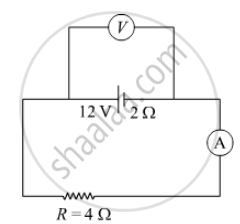
Explain the principle of a device that can build up high voltages of the order of a few million volts.
A test charge ‘q’ is moved without acceleration from A to C along the path from A to B and then from B to C in electric field E as shown in the figure. (i) Calculate the potential difference between A and C. (ii) At which point (of the two) is the electric potential more and why?
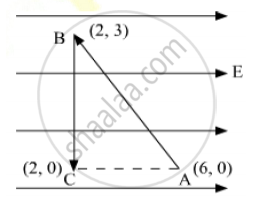
Find the potential difference `V_a - V_b` between the points a and b shown in each part of the figure.
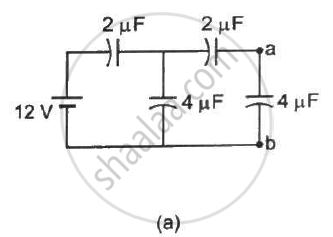
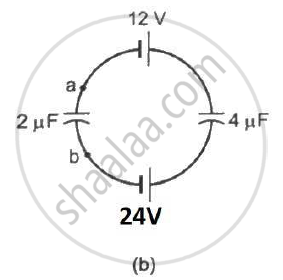
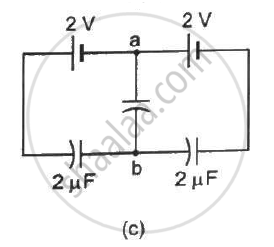
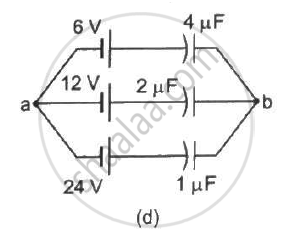
A charge of `+2.0 xx 10^-8 C` is placed on the positive plate and a charge of `-1.0 xx 10^-8 C` on the negative plate of a parallel-plate capacitor of capacitance `1.2 xx 10^-3 "uF"` . Calculate the potential difference developed between the plates.
A charge of 20 µC is placed on the positive plate of an isolated parallel-plate capacitor of capacitance 10 µF. Calculate the potential difference developed between the plates.
The capacitance between the adjacent plates shown in figure is 50 nF. A charge of 1⋅0 µC is placed on the middle plate. (a) What will be the charge on the outer surface of the upper plate? (b) Find the potential difference developed between the upper and the middle plates.
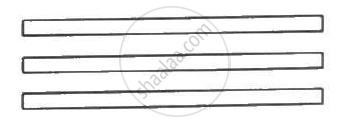
The capacitance between the adjacent plates shown in the figure is 50 nF. A charge of 1.0µC is placed on the middle plate. If 1.0 µC is placed on the upper plate instead of the middle, what will be the potential difference between (a) the upper and the middle plates and (b) the middle and the lower plates?
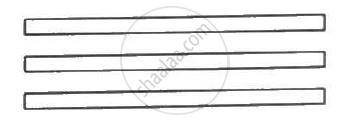
What will be the potential difference in the circuit when direct current is passed through the circuit?
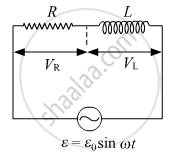
In circuits, a difference in potential from one point to another is often called ______.
If a positive charge moves in the direction of the electric field ______.
The unit of potential difference as used in electrical circuits is ________.
- It depends only on the initial and final position.
- It is the work done per unit positive charge in moving from one point to other.
- It is more for a positive charge of two units as compared to a positive charge of one unit.
A and B are two points in an electric field. If the work done in carrying 4.0C of electric charge from A to B is 16.0 J, the potential difference between A and B is:
An α-particle and a proton are accelerate at same potential difference from rest. What will be the ratio of their final velocity?
